For years, we’ve been captivated by the race to build bigger AI models. We’ve watched as parameter counts soared from millions to hundreds of billions, with each new large language model (LLM) promising more impressive capabilities. But here’s the fascinating twist we’re witnessing in 2025: the future of AI might not be about going bigger it’s about going smarter and smaller. We’ll discuss about Small Language Models (SLMs). But, why Smaller Might Actually Be Smarter?
Small Language Models (SLMs) are rapidly emerging as a game-changing alternative to their heavyweight counterparts, and we’re about to explore why this shift could redefine how we interact with artificial intelligence in our daily lives.
- What Exactly Are Small Language Models?
- The Architecture Behind the Magic
- Why We’re Seeing a Shift Toward Small Language Models
- The Rising Stars: Top Small Language Models of 2025
- Where We’re Seeing Real-World Impact
- The Agentic AI Revolution
- Challenges We Need to Acknowledge
- The Market Momentum We’re Witnessing
- MIT’s Recognition: A Breakthrough Technology
- What We Can Expect in the Coming Years
- How We Should Think About Choosing Between SLMs and LLMs
- The Democratization We’re Witnessing
- Making It Practical: Getting Started with SLMs
- The Bottom Line
- Frequently Asked Questions About Small Language Models
What Exactly Are Small Language Models?
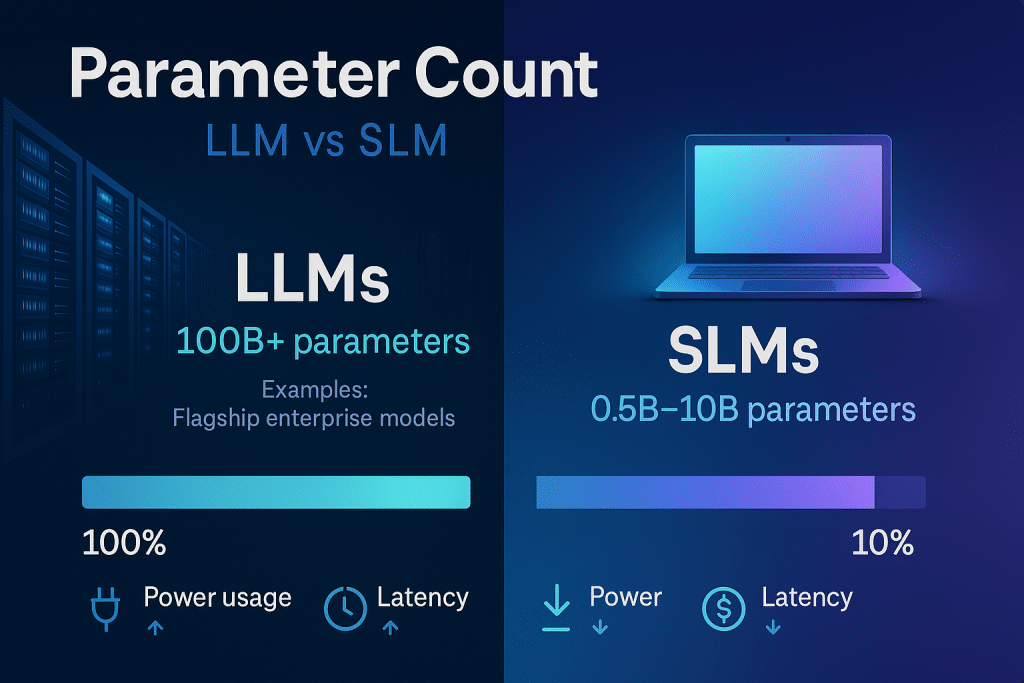
Let’s start with the fundamentals. Small Language Models are AI systems designed to process, understand, and generate natural language content—just like the LLMs we’ve become familiar with. The key difference? Size and efficiency.
While large language models typically contain hundreds of billions or even trillions of parameters, SLMs operate with significantly fewer—typically ranging from a few million to a few billion parameters. Think of parameters as the building blocks of knowledge within an AI model. Fewer parameters mean a more compact, streamlined system.
But here’s what makes this truly exciting: smaller doesn’t mean less capable. Modern SLMs are proving that with the right training techniques and architectural optimizations, we can achieve remarkable performance without the massive computational overhead.
The Architecture Behind the Magic
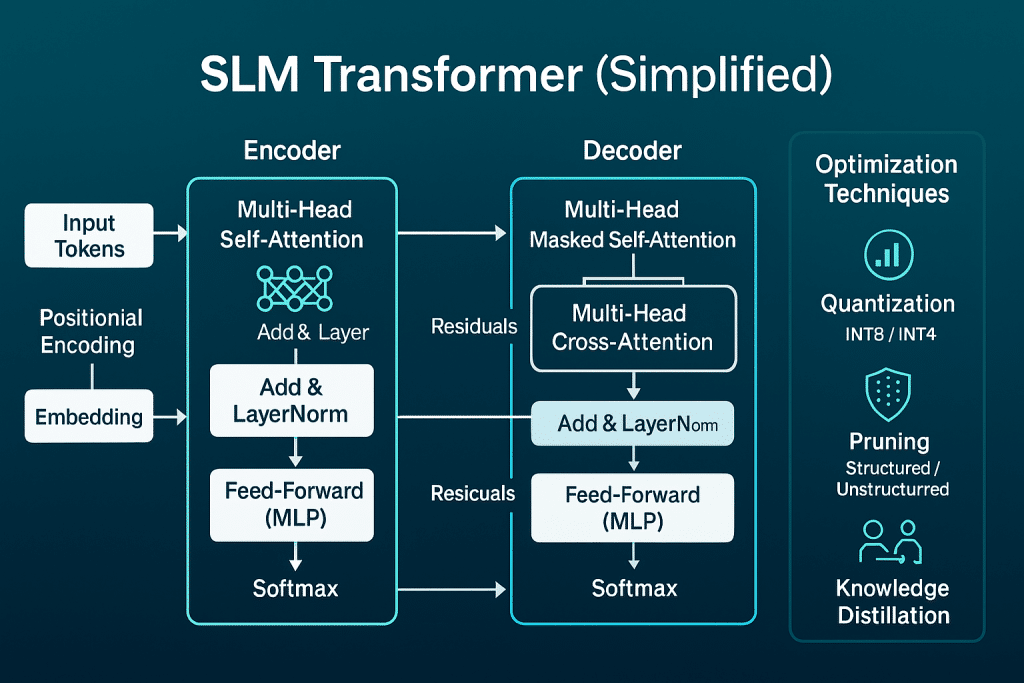
We need to understand how SLMs work to appreciate their potential. At their core, these models rely on transformer architecture—the same foundation that powers the large language models we know. They use self-attention mechanisms that enable the model to focus on the most important parts of input text, regardless of position.
What sets SLMs apart is their optimization. Through techniques like:
- Quantization: Reducing the precision of model data to lower memory requirements
- Pruning: Removing less useful parts of the model while maintaining performance
- Knowledge Distillation: Transferring knowledge from larger pre-trained models to smaller ones
- Parameter-Efficient Fine-Tuning: Training only small portions of the model for specific tasks
These methods allow SLMs to deliver impressive results while remaining lightweight enough to run on everyday devices.
Why We’re Seeing a Shift Toward Small Language Models
The Cost Factor We Can’t Ignore
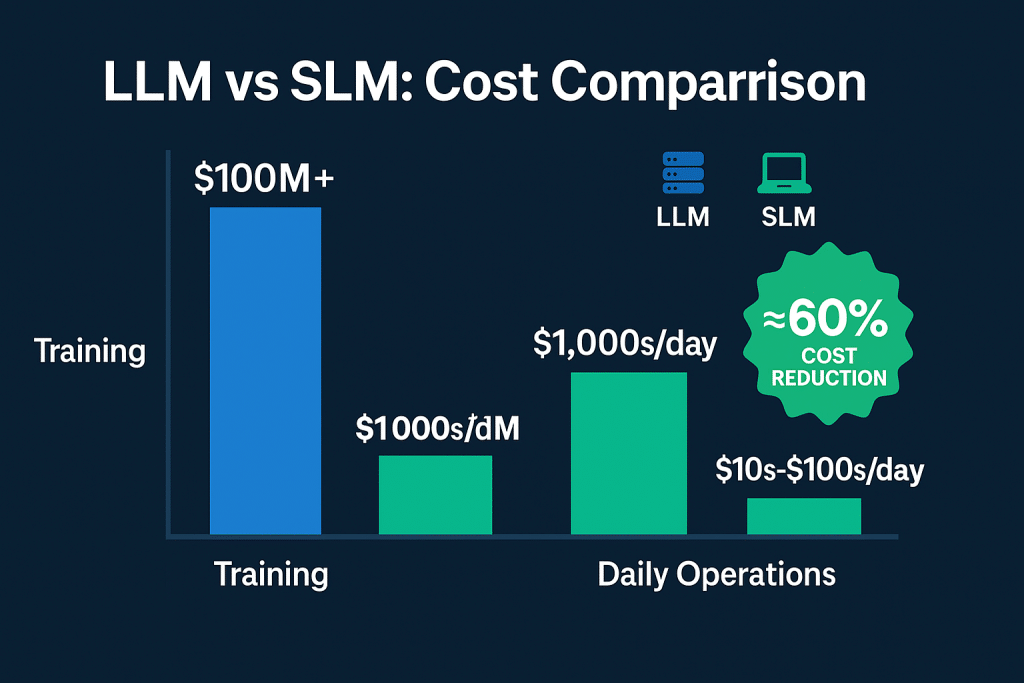
Let’s talk numbers. Training GPT-4 reportedly cost over $100 million in computational resources alone, with daily operational costs running into thousands of dollars. For most businesses, this simply isn’t sustainable.
SLMs flip this equation. We’re seeing deployment costs reduced by up to 60% compared to large models, with inference speeds 10-30 times faster. For enterprises operating at scale, these savings translate to millions of dollars annually.
Privacy Takes Center Stage
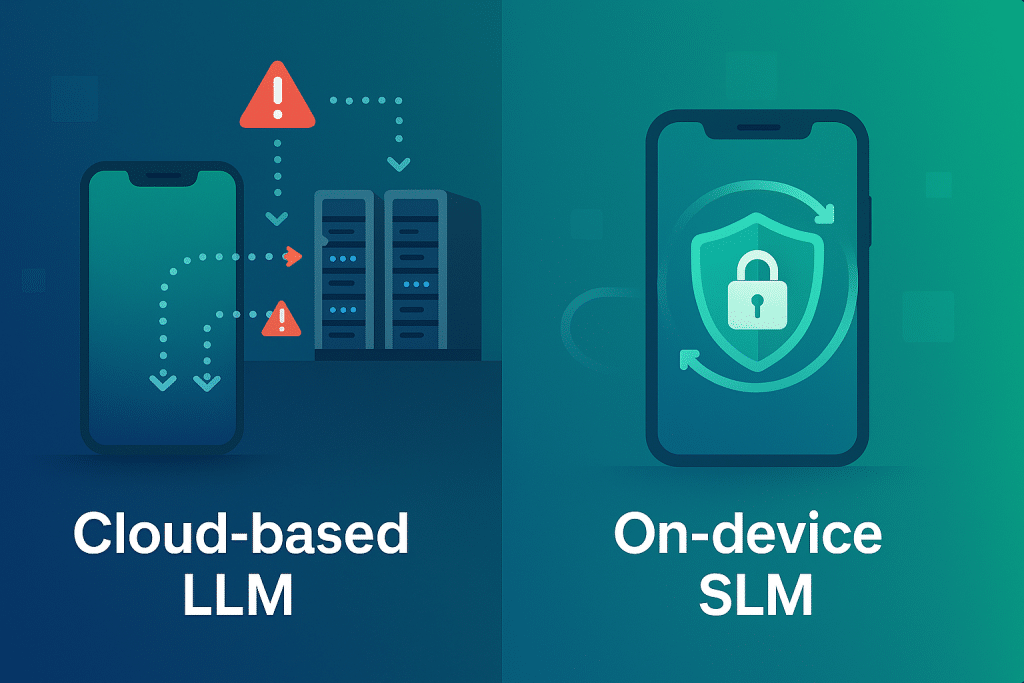
Here’s something we’ve all become more conscious about: data privacy. With SLMs, we can deploy models directly on our devices—smartphones, laptops, even smartwatches—eliminating the need to send sensitive data to external servers.
This isn’t just convenient; it’s transformative for industries handling sensitive information. Healthcare providers can analyze patient data locally. Financial institutions can process transactions without exposing customer information to cloud services. Manufacturing facilities can monitor operations without security risks.
Speed That Actually Matters
We’ve all experienced the frustration of waiting for AI responses. SLMs address this head-on. Their compact size enables real-time responsiveness—crucial for applications where milliseconds matter, like autonomous vehicles, voice assistants, and emergency response systems.
The Environmental Angle We Need to Consider
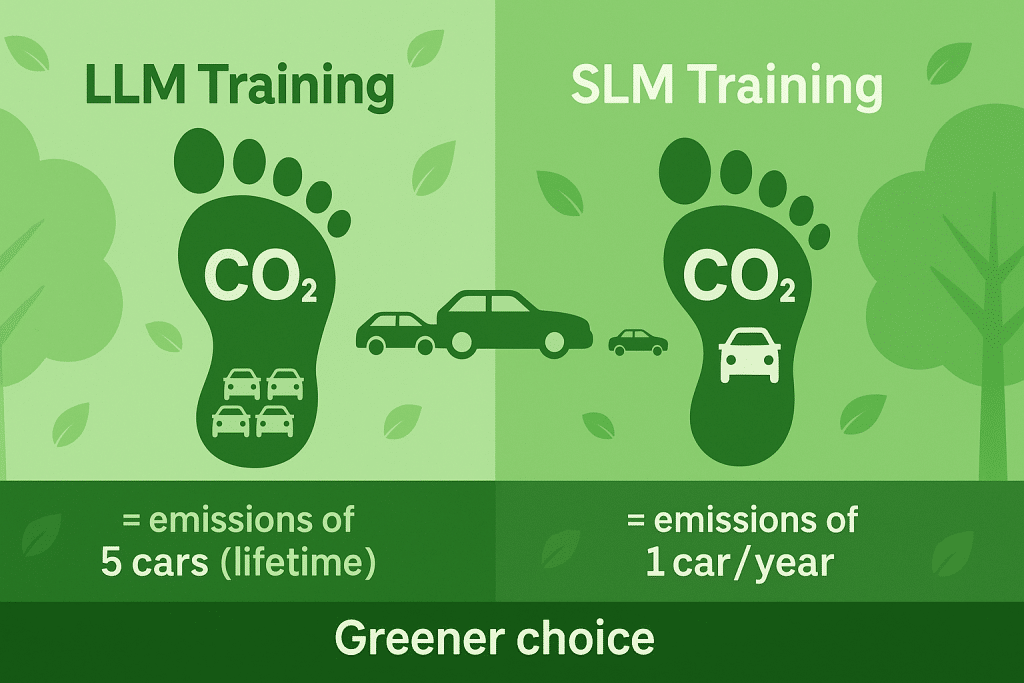
As we become more environmentally conscious, the carbon footprint of AI can’t be ignored. Large language models consume enormous amounts of energy—training a single large model can emit as much CO2 as several cars over their entire lifetime.
SLMs require significantly less computational power and energy, making them a more sustainable choice as AI becomes increasingly ubiquitous in our lives.
The Rising Stars: Top Small Language Models of 2025
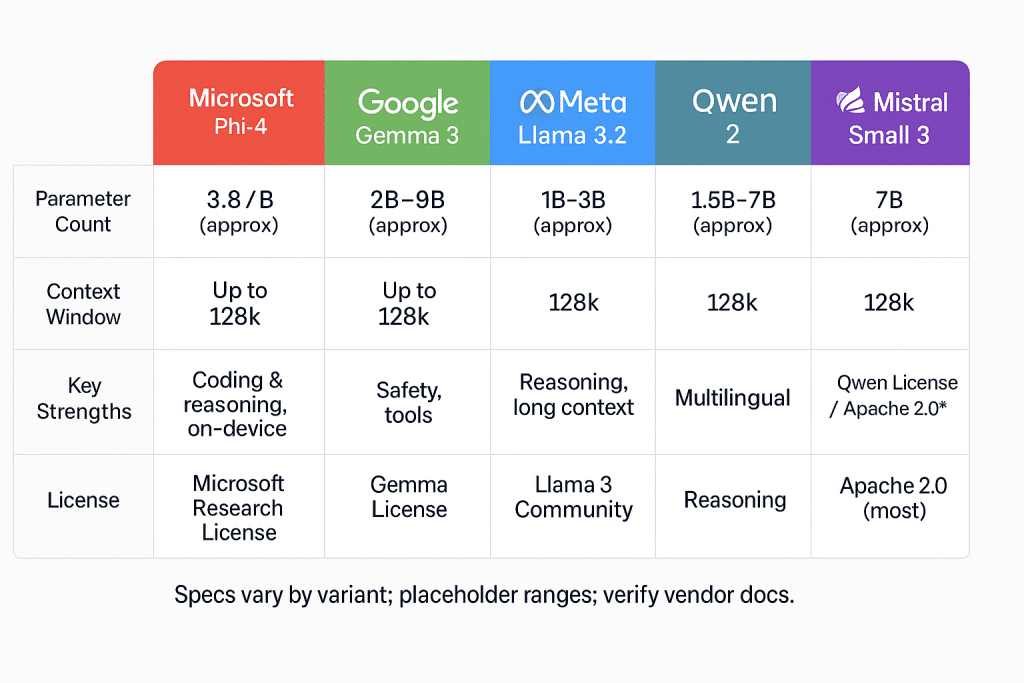
Let’s explore the models leading this revolution:
Microsoft Phi-3.5 and Phi-4
Microsoft’s Phi series represents some of the most impressive work in the SLM space. Phi-3.5 Mini, with 3.8 billion parameters, consistently outperforms models many times its size in reasoning and coding tasks. The latest Phi-4 Multimodal takes this further, seamlessly integrating vision, audio, and text processing in a single framework.
What makes Phi models special? They’re trained on high-quality, reasoning-rich data rather than simply massive datasets, proving that data quality trumps quantity.
Google’s Gemma Family
Gemma 2 and the recently released Gemma 3 showcase Google’s commitment to accessible AI. Available in sizes from 1B to 27B parameters, these models offer flexibility for different use cases. Gemma 3 introduces multimodal capabilities, handling images and audio alongside text—all while maintaining the efficiency we need for edge deployment.
Meta’s Llama 3.2
Meta continues to push boundaries with Llama 3.2, offering models from 1B to 90B parameters. The smaller versions (1B and 3B) are specifically optimized for mobile and edge devices, while still delivering performance that rivals much larger models. With support for 128K token context windows, these models can handle extensive conversations and documents.
Alibaba’s Qwen 2 Series
The Qwen family spans from an incredibly compact 0.5B to 72B parameters, with the smaller versions breaking what we once thought was impossible—delivering strong instruction-following behavior in models under 1 billion parameters. Their multilingual capabilities (supporting 29 languages) make them particularly valuable for global applications.
Mistral AI’s Offerings
Mistral NeMo (12B parameters) and Mistral Small 3 (24B parameters) demonstrate that performance and efficiency aren’t mutually exclusive. Mistral Small 3 delivers performance comparable to Llama’s 70B model while running over three times faster—a remarkable achievement.
Where We’re Seeing Real-World Impact
Edge Computing and IoT
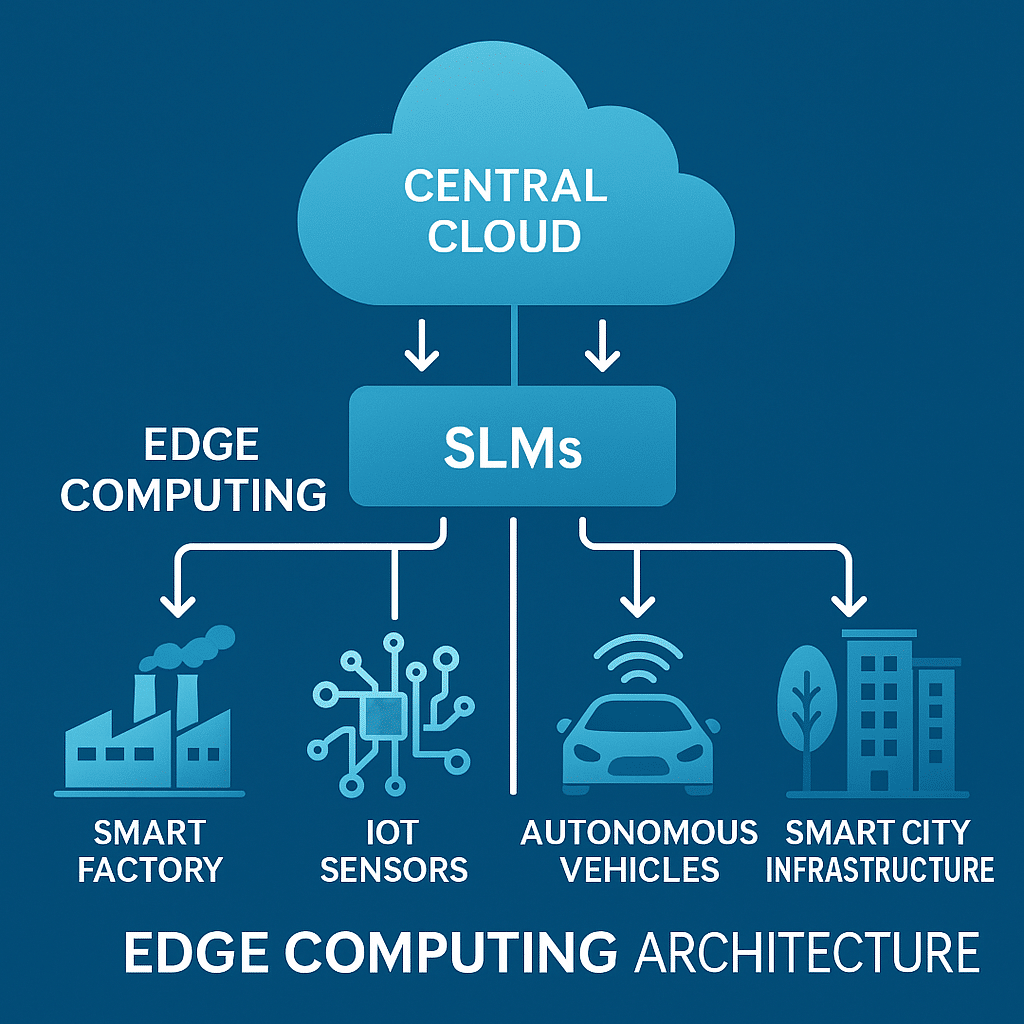
We’re witnessing a transformation in how we process data at the edge—closer to where it’s generated rather than sending everything to cloud servers. SLMs are perfect for this paradigm. They enable:
- Smart manufacturing: Real-time quality inspection, predictive maintenance, and production optimization
- IoT devices: Intelligent sensors that can analyze data locally and make autonomous decisions
- Autonomous vehicles: Split-second decision-making without cloud dependency
- Smart cities: Traffic management, environmental monitoring, and public safety systems
Healthcare Revolution
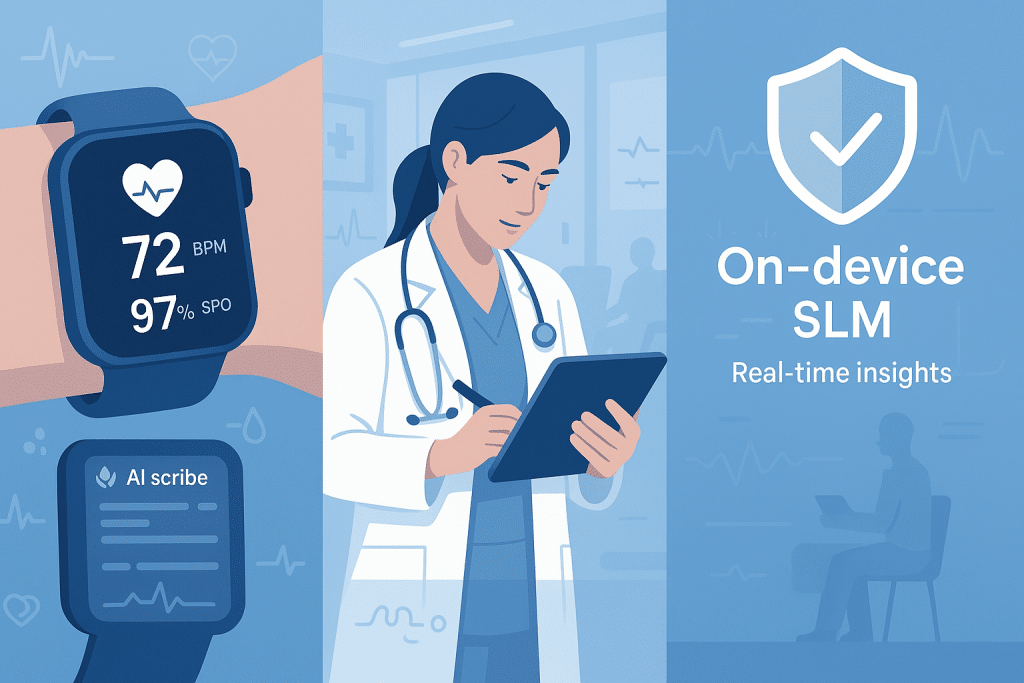
The healthcare sector is experiencing a SLM-driven transformation. We’re seeing:
- On-device patient monitoring: Wearable devices analyzing health data locally while maintaining privacy
- Medical documentation: AI scribes helping physicians complete records in real-time
- Diagnostic assistance: Analyzing medical images and suggesting insights without exposing patient data
- Telemedicine enhancement: Real-time language translation and summarization during consultations
Mobile and Personal Devices
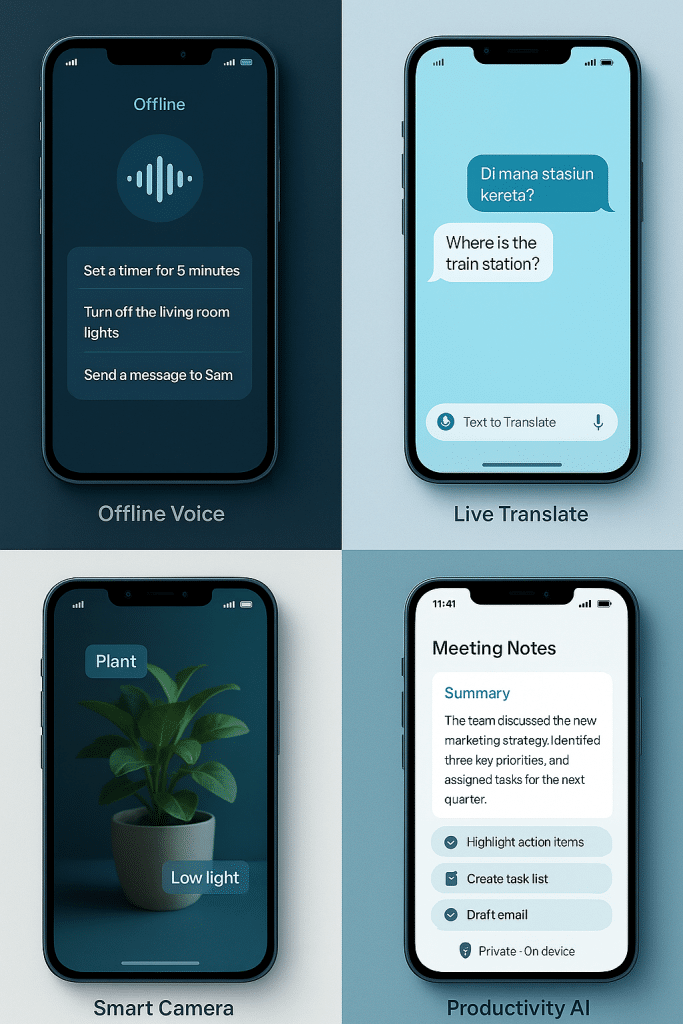
Perhaps most exciting for everyday users, SLMs are enabling truly intelligent personal devices:
- Offline voice assistants: Responding to commands without internet connectivity
- Real-time translation: Converting conversations between languages instantly
- Smart cameras: Understanding scenes and optimizing settings locally
- Productivity tools: Summarizing documents, generating emails, and managing schedules—all on-device
Enterprise Applications
Businesses are rapidly adopting SLMs for:
- Customer service chatbots: Fast, accurate responses without API costs
- Document processing: Analyzing contracts, invoices, and reports locally
- Code generation: Assisting developers with boilerplate and routine tasks
- Data analysis: Generating insights from business intelligence data
The Agentic AI Revolution
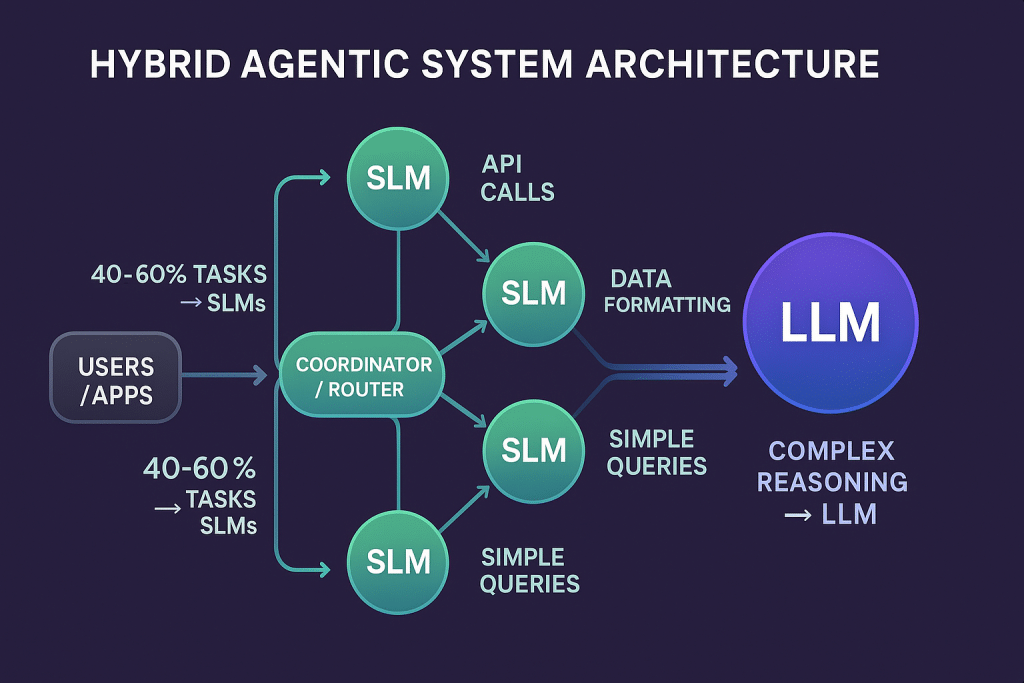
Here’s where things get particularly interesting. Recent research from NVIDIA suggests that SLMs are ideal for agentic AI systems—AI that performs tasks autonomously through multiple specialized agents.
In agentic workflows, we’re seeing that approximately 40-60% of tasks currently handled by large language models could be efficiently managed by specialized SLMs. This creates a natural architecture where:
- SLMs handle routine, specialized tasks (API calls, data formatting, simple reasoning)
- LLMs focus on complex reasoning and general conversation
- Heterogeneous systems combine both for optimal performance
This hybrid approach offers the best of both worlds—the efficiency of SLMs with the versatility of LLMs when needed.
Challenges We Need to Acknowledge
Let’s be honest about the limitations. SLMs aren’t perfect for every situation:
Narrower Knowledge Base
With fewer parameters comes reduced general knowledge. SLMs excel at specific tasks they’re trained for but may struggle with extremely diverse topics or questions requiring broad world knowledge.
Complex Reasoning Limitations
While modern SLMs handle many reasoning tasks well, they may face challenges with multi-step logic problems or scenarios requiring extensive context understanding that larger models handle more naturally.
Fine-Tuning Requirements
To achieve optimal performance, SLMs often need task-specific fine-tuning. This means we can’t simply deploy them out-of-the-box for every application—they require customization for specific use cases.
Potential for Bias
Smaller training datasets can lead to more concentrated biases. We need to be vigilant about evaluating and mitigating these biases to ensure fair and reliable outputs.
The Market Momentum We’re Witnessing
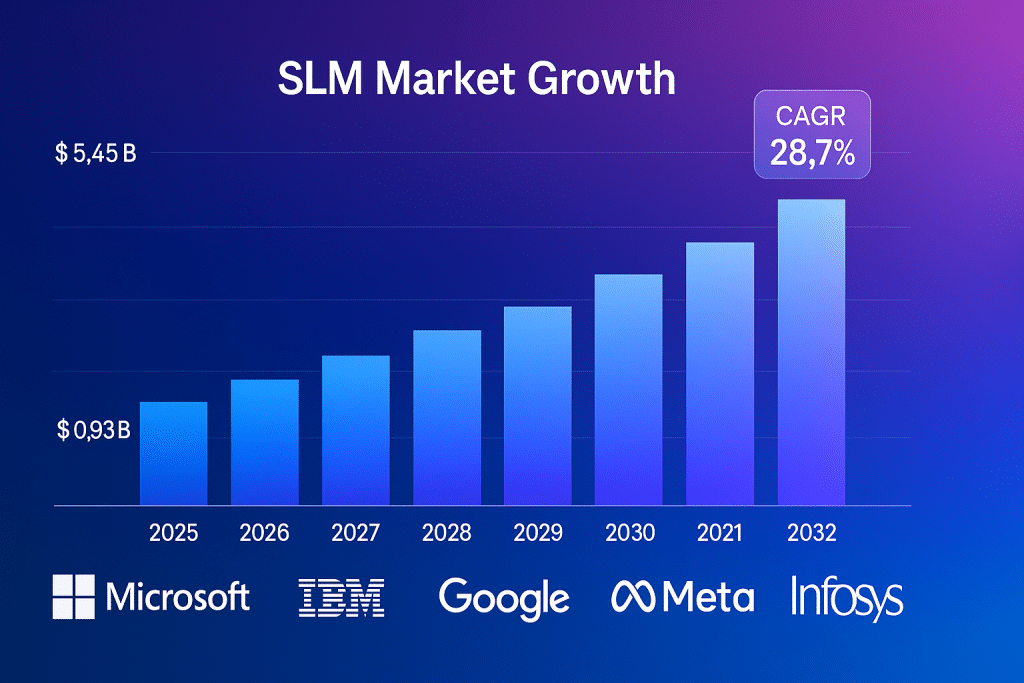
The numbers tell a compelling story. The global SLM market, valued at $0.93 billion in 2025, is projected to reach $5.45 billion by 2032—a compound annual growth rate of 28.7%. This isn’t hype; it’s a fundamental shift in how organizations approach AI deployment.
Major players are investing heavily:
- Microsoft integrates SLMs throughout Azure AI services
- IBM focuses on SLMs for edge computing and manufacturing
- Google makes Gemma freely available with extensive tooling
- Meta releases Llama models with permissive licensing
- Infosys leads in domain-specific SLM implementations
MIT’s Recognition: A Breakthrough Technology
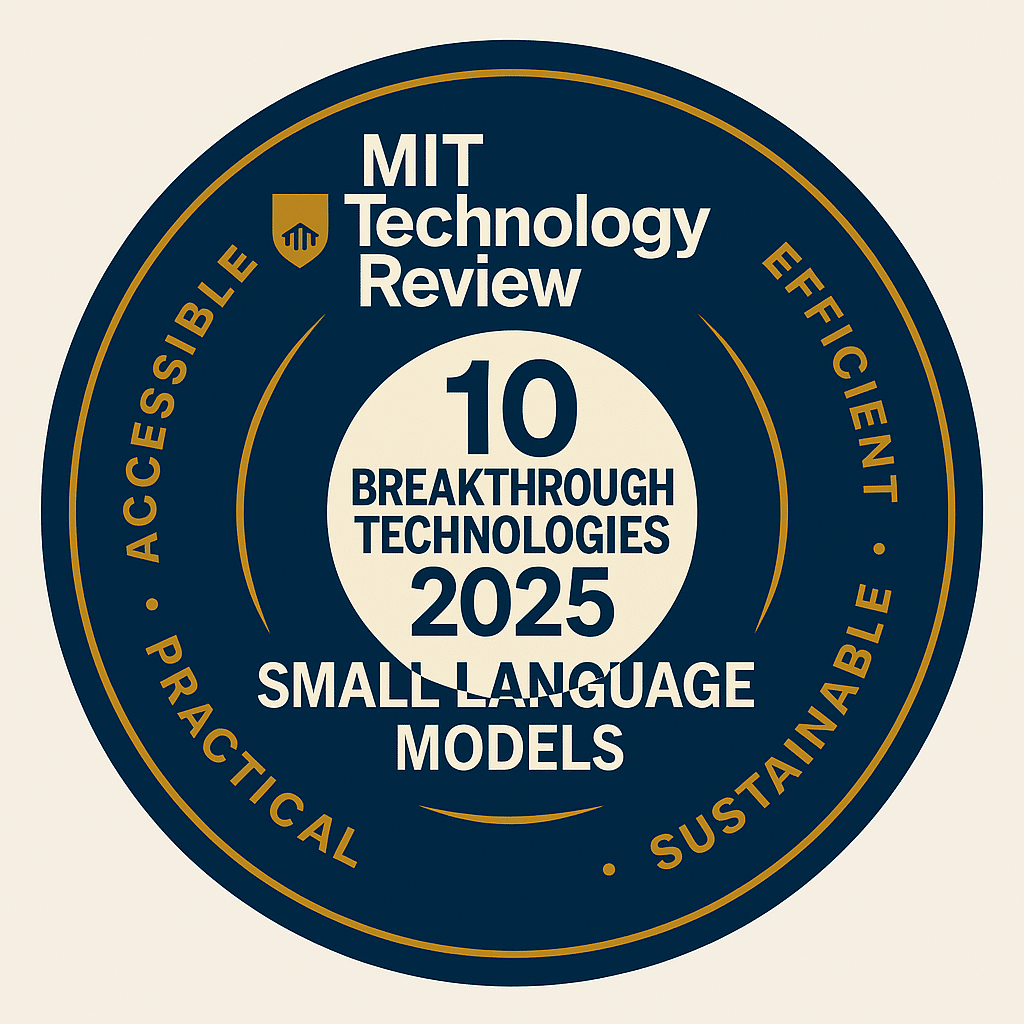
The validation came when MIT Technology Review named Small Language Models one of their 10 Breakthrough Technologies of 2025. This recognition underscores what we’re observing across the industry: SLMs represent not just an incremental improvement, but a fundamental shift in making AI more accessible, efficient, and practical.
What We Can Expect in the Coming Years
Hardware Evolution
We’re seeing chip manufacturers design processors specifically optimized for SLM inference. Qualcomm’s latest mobile processors, NVIDIA’s edge computing platforms, and Google’s Edge TPU are all enabling more powerful on-device AI.
Architectural Innovations
Research into from-scratch SLM design—rather than simply compressing larger models—promises even better performance-to-size ratios. We’re moving toward models designed from the ground up for edge deployment.
Federated Learning Integration
The combination of SLMs with federated learning is particularly exciting. Imagine hospitals training SLMs on their patient data, then sharing only the learned parameters—benefiting everyone while maintaining privacy. This same principle applies across industries handling sensitive data.
Multimodal Expansion
The latest SLMs increasingly handle not just text, but images, audio, and video. This multimodal capability opens new possibilities for applications that need to understand our complex, multi-sensory world.
Industry-Specific Models
We’re seeing the emergence of specialized SLMs for specific industries—legal language models, financial analysis models, healthcare documentation models—each optimized for their particular domain.
How We Should Think About Choosing Between SLMs and LLMs
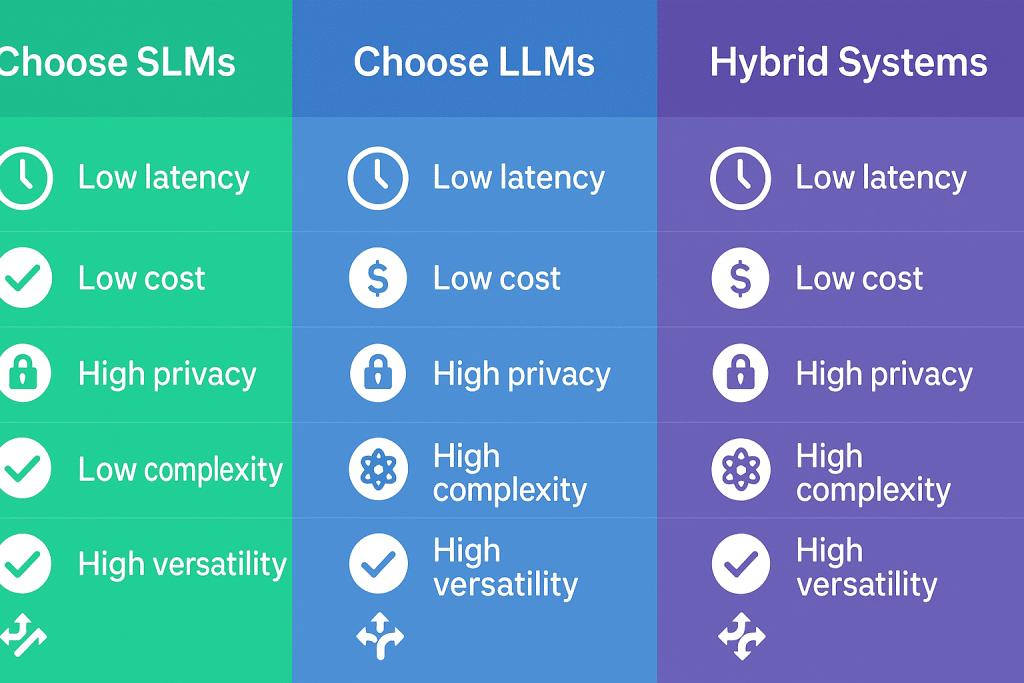
The question isn’t “which is better?” but “which is right for this use case?” Here’s a framework we can use:
Choose SLMs when we need:
- Real-time responsiveness with minimal latency
- On-device or edge deployment
- Privacy-sensitive data processing
- Cost-effective scaling
- Domain-specific expertise
- Energy-efficient operations
Choose LLMs when we need:
- Broad general knowledge across many domains
- Complex multi-step reasoning
- Highly creative or abstract tasks
- Versatility without fine-tuning
- Maximum capability regardless of cost
Consider hybrid systems when:
- Workloads include both routine and complex tasks
- We need to balance cost with capability
- Different components have different requirements
The Democratization We’re Witnessing

Perhaps the most significant aspect of the SLM revolution is democratization. For the first time, we’re seeing AI capabilities that don’t require massive budgets, extensive infrastructure, or specialized expertise to deploy.
Startups can compete with tech giants. Universities can conduct cutting-edge research without supercomputer access. Individuals can build sophisticated AI applications on personal computers. Developing nations can deploy AI solutions without expensive cloud infrastructure.
This leveling of the playing field could accelerate innovation in ways we’re only beginning to imagine.
Making It Practical: Getting Started with SLMs
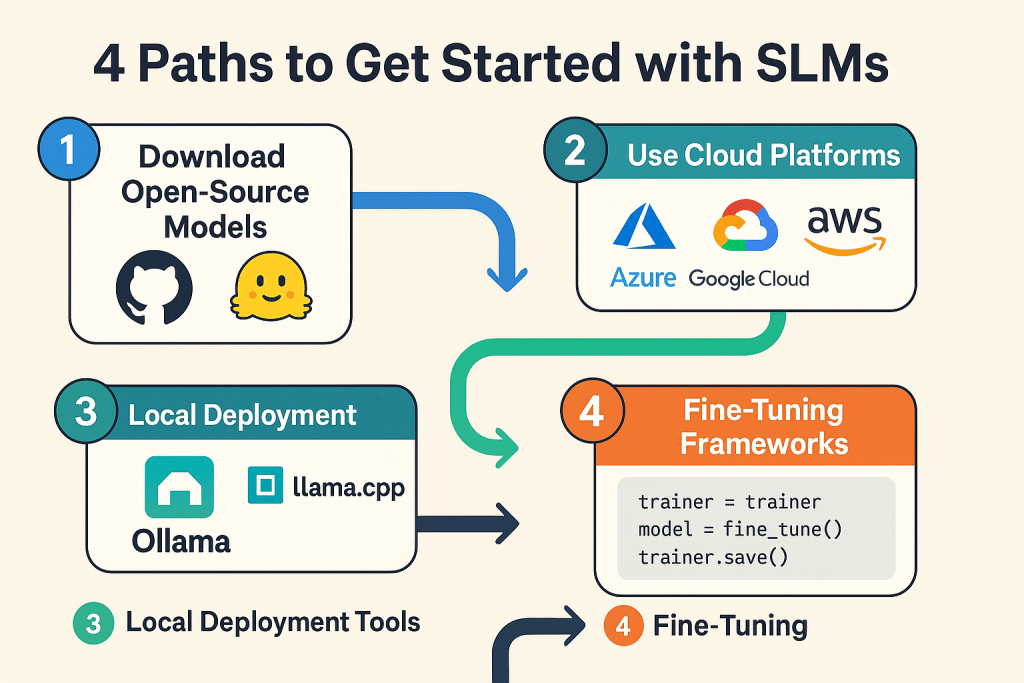
For those of us ready to explore SLMs, the entry points have never been more accessible:
Open-Source Options: Models like Llama 3.2, Gemma 3, and Mistral NeMo are freely available with permissive licenses. We can download them today and start experimenting.
Cloud Platforms: Azure AI Studio, Google Vertex AI, and AWS Bedrock all offer SLM deployment options with pay-as-you-go pricing.
Local Deployment: Tools like Ollama, llama.cpp, and Hugging Face Transformers make it straightforward to run SLMs on our own hardware.
Fine-Tuning Frameworks: Libraries like Unsloth, PEFT, and QLoRA enable efficient customization for specific tasks.
The Bottom Line
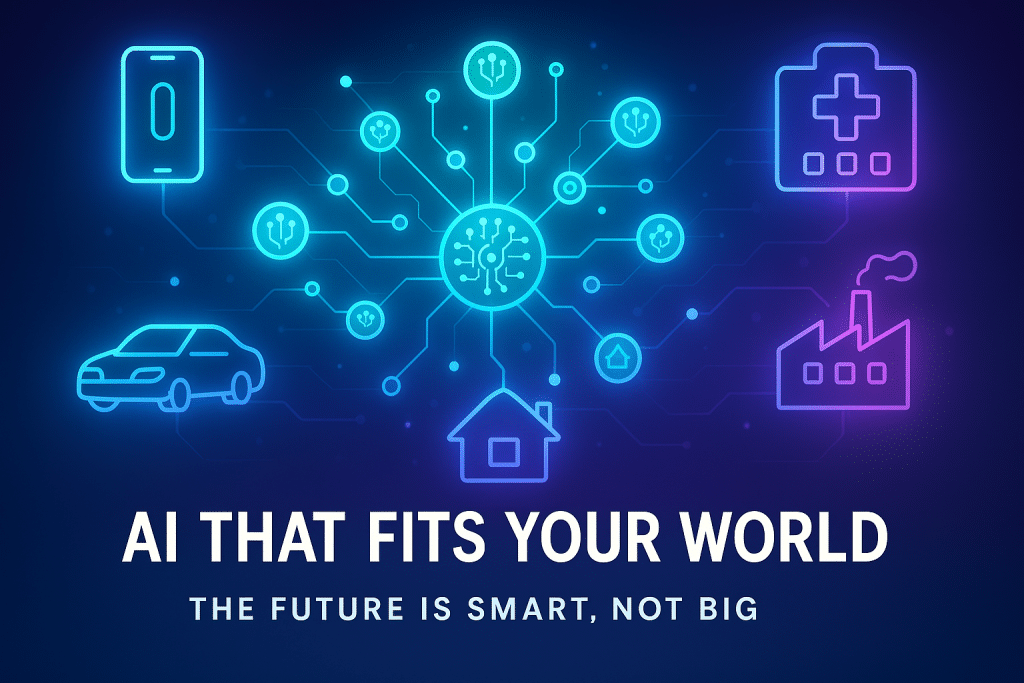
We’re at an inflection point in AI development. The race to build ever-larger models continues, but parallel to it, we’re witnessing something potentially more transformative: the perfection of smaller, smarter, more accessible AI.
Small Language Models represent a maturation of AI technology—moving from “how much can we do?” to “how efficiently can we do what matters?” They’re making AI more sustainable, more private, more accessible, and more practical for real-world applications.
As we look ahead, the question isn’t whether SLMs will play a major role in AI’s future—it’s how quickly we can harness their potential to solve the problems that matter most. The next big thing in AI might not be the biggest model—it might be the smartest use of the right-sized model for each task.
We’re not just witnessing a trend; we’re participating in a fundamental shift in how artificial intelligence becomes part of our daily lives. And that’s genuinely exciting.
The small language model revolution is here. The question is: what will we build with it?
Frequently Asked Questions About Small Language Models
What’s the difference between Small Language Models (SLMs) and Large Language Models (LLMs)?
The primary difference lies in size and deployment approach. LLMs like GPT-4 or Claude contain hundreds of billions of parameters and typically run on powerful cloud servers, requiring internet connectivity and significant computational resources. SLMs, in contrast, contain anywhere from a few million to a few billion parameters and are specifically designed to run efficiently on edge devices like smartphones, laptops, or IoT devices. While LLMs excel at broad general knowledge and complex reasoning across diverse topics, SLMs are optimized for specific tasks and can deliver impressive performance in their specialized domains while consuming 60% less resources and running 10-30 times faster than their larger counterparts.
Can Small Language Models run completely offline on my device?
Yes, one of the most compelling advantages of SLMs is their ability to run entirely offline on consumer devices. Models like Microsoft Phi-3.5 Mini (3.8B parameters), Meta’s Llama 3.2 (1B-3B versions), and Google’s Gemma 2 (2B-9B versions) are specifically optimized for on-device deployment. This means you can use AI-powered features for tasks like text summarization, language translation, coding assistance, or voice commands without sending any data to external servers. This offline capability not only protects your privacy but also enables AI functionality in areas with poor internet connectivity and eliminates latency associated with cloud-based processing. However, the specific hardware requirements vary—typically you’ll need at least 4-8GB of RAM for smaller models and modern processors with neural processing units (NPUs) for optimal performance.
Are Small Language Models less accurate than large models?
Not necessarily—it depends entirely on the use case. For specialized, domain-specific tasks, properly fine-tuned SLMs can match or even outperform much larger models. Microsoft’s Phi-3.5, for example, with just 3.8 billion parameters, consistently outperforms models 10-20 times its size on reasoning and coding benchmarks. The key is that SLMs are typically trained or fine-tuned for specific applications rather than trying to be generalists. Where SLMs do fall short is in scenarios requiring extremely broad world knowledge, complex multi-step reasoning across diverse domains, or tasks needing deep contextual understanding spanning thousands of tokens. Think of it this way: an LLM is like a general practitioner with broad medical knowledge, while an SLM is like a specialist who excels deeply in their specific field but may not know everything outside that domain.
How much does it cost to deploy and run Small Language Models?
The cost structure for SLMs is dramatically different from LLMs, which is one of their biggest advantages. Initial deployment costs for SLMs can be 60-80% lower than large models. For cloud-hosted SLMs through platforms like Azure AI Studio or Google Vertex AI, you might pay $0.001-0.01 per 1,000 tokens compared to $0.01-0.10 for large models—a 10-100x cost reduction. For on-device deployment, there are essentially no per-use costs beyond the initial development investment. A company processing 10 million API calls monthly might spend $50,000-200,000 with large model APIs versus $5,000-20,000 with SLMs or nearly zero with on-device SLMs. The biggest cost consideration becomes the fine-tuning process if you need domain-specific optimization, which can range from a few hundred dollars for basic fine-tuning to tens of thousands for extensive customization—still far less than LLM costs at scale.
What industries benefit most from Small Language Models?
Several industries are seeing transformative benefits from SLMs. Healthcare is leveraging them for on-device patient monitoring, medical documentation, and diagnostic assistance while maintaining HIPAA compliance through local data processing. Manufacturing uses SLMs for real-time quality control, predictive maintenance, and production optimization at the edge. Financial services deploy them for fraud detection, risk assessment, and customer service while keeping sensitive financial data on-premises. Retail implements SLMs for personalized shopping assistants, inventory management, and point-of-sale optimization. Education uses them for adaptive learning platforms and automated grading that work offline. Automotive industry deploys them in vehicles for autonomous driving features, voice commands, and in-car assistance without cloud dependency. Any industry handling sensitive data, requiring real-time processing, or operating in bandwidth-constrained environments sees significant advantages from SLM adoption.
Can I fine-tune a Small Language Model for my specific business needs?
Absolutely, and this is one of the most powerful aspects of SLMs. Fine-tuning allows you to specialize a general-purpose SLM for your specific domain, terminology, and use cases. Modern fine-tuning frameworks like LoRA (Low-Rank Adaptation), QLoRA, and PEFT (Parameter-Efficient Fine-Tuning) make this process accessible even with limited computational resources. You can fine-tune most open-source SLMs like Llama 3.2, Gemma, or Mistral NeMo with as little as a few thousand examples and consumer-grade GPUs. The process typically takes hours to days rather than weeks, and costs range from hundreds to a few thousand dollars depending on complexity. For example, you could fine-tune Gemma 2B on your company’s technical documentation, support tickets, or product information to create a highly specialized assistant that understands your specific business context better than any general model. Many cloud platforms now offer managed fine-tuning services that handle the technical complexity for you.
What hardware do I need to run Small Language Models locally?
Hardware requirements vary significantly based on the model size and your performance expectations. For smaller SLMs (1-3B parameters) like Phi-3.5-mini or Llama 3.2-1B, you can run them on mid-range consumer hardware: a laptop with 8-16GB RAM, modern CPU, and ideally a GPU with 4-6GB VRAM will provide decent performance. For medium SLMs (7-13B parameters), you’ll want 16-32GB RAM and a GPU with 8-12GB VRAM for smooth operation. Modern smartphones with capable NPUs (Neural Processing Units) like Apple’s A17 Pro, Qualcomm Snapdragon 8 Gen 3, or Google Tensor G4 can run smaller SLMs effectively. Specialized AI accelerators like NVIDIA Jetson for edge deployment or Google’s Edge TPU significantly improve performance and efficiency. The good news is that quantization techniques can reduce memory requirements by 50-75% with minimal quality loss, making it possible to run 7B parameter models on devices with just 4-6GB RAM. Tools like Ollama, llama.cpp, and Hugging Face’s Transformers library automatically optimize models for your available hardware.
Are Small Language Models secure and private?
SLMs offer significantly enhanced security and privacy compared to cloud-based LLMs, primarily because they enable complete on-device processing. When data never leaves your device or local network, you eliminate risks associated with data transmission, third-party servers, and potential data breaches in cloud infrastructure. This is particularly valuable for industries with strict data compliance requirements like healthcare (HIPAA), finance (PCI-DSS, SOX), or government (FedRAMP). However, security isn’t automatic—you still need to implement proper safeguards. Ensure models are obtained from trusted sources, implement access controls, regularly update models to address potential vulnerabilities, and use secure enclaves or trusted execution environments when available. For enterprise deployment, consider additional measures like model encryption, secure boot processes, and monitoring for adversarial attacks. On-device SLMs also protect against prompt injection attacks targeting external APIs and ensure your proprietary prompts and fine-tuning data remain confidential.
How do Small Language Models handle multiple languages?
Language support in SLMs varies significantly by model. Some SLMs like Qwen 2 are specifically designed as multilingual models, supporting 29 languages with strong performance across all of them. Models like Gemma and Llama 3.2 offer good multilingual capabilities but may show stronger performance in high-resource languages (English, Spanish, French, Chinese) compared to low-resource languages. The key advantage of SLMs for multilingual applications is their ability to perform real-time translation and language processing entirely on-device, which is transformative for applications like travel assistance, international customer service, or educational tools. If you need strong performance in specific languages, you can fine-tune a multilingual SLM on your target languages to significantly improve accuracy. Many modern SLMs use cross-lingual transfer learning, where knowledge from high-resource languages helps improve performance in related languages. For specialized business applications, you might combine a multilingual SLM for language detection and general understanding with language-specific SLMs for optimal performance in each target language.
What’s the future roadmap for Small Language Models?
The SLM landscape is evolving rapidly with several exciting trends. Multimodal SLMs that seamlessly process text, images, audio, and video are becoming standard—models like Phi-4 Multimodal and Gemma 3 demonstrate this trend. Hardware co-optimization is accelerating, with chip manufacturers designing processors specifically for efficient SLM inference, enabling even more powerful models on everyday devices. We’re seeing the emergence of mixture-of-experts (MoE) architectures in smaller form factors, where multiple specialized sub-models activate conditionally for different tasks, delivering LLM-like versatility in SLM-sized packages. Industry-specific SLMs trained on domain data are proliferating—expect to see legal SLMs, medical SLMs, financial SLMs, and others optimized for specialized professional use. Federated learning integration will enable SLMs to learn collaboratively across organizations while maintaining data privacy. The market is projected to grow from $0.93 billion in 2025 to $5.45 billion by 2032, indicating massive investment and innovation ahead. Perhaps most exciting is the continued improvement in performance-per-parameter efficiency, where models half the size deliver equivalent or better results than last year’s larger models.
How do I choose between using an SLM or an LLM for my project?
The decision framework comes down to matching your specific requirements with each model type’s strengths. Choose SLMs when your priority is real-time responsiveness (latency under 100ms), on-device or edge deployment, privacy-sensitive data processing, cost-effective scaling (especially high-volume applications), domain-specific expertise, or energy-efficient operations. SLMs excel at focused, repetitive tasks with well-defined parameters. Choose LLMs when you need broad general knowledge across diverse topics, complex multi-step reasoning, creative or abstract tasks, versatility without extensive fine-tuning, or maximum capability regardless of cost. LLMs are better for open-ended queries, research assistance, or applications requiring deep contextual understanding. Consider hybrid architectures when your workload includes both routine and complex tasks—use SLMs for 70-80% of predictable operations and LLMs for complex edge cases, or implement a routing system where simple queries go to SLMs and complex ones escalate to LLMs. Many successful implementations use this tiered approach, achieving optimal balance between cost, performance, and capability. Start by analyzing your specific use cases: what percentage requires broad knowledge versus specialized expertise? How sensitive is your latency budget? What are your privacy constraints? These factors will guide your decision.
Have more questions about implementing Small Language Models? The technology is evolving rapidly, and new capabilities emerge regularly. Stay informed about the latest developments in the SLM space to make the most of this transformative technology.
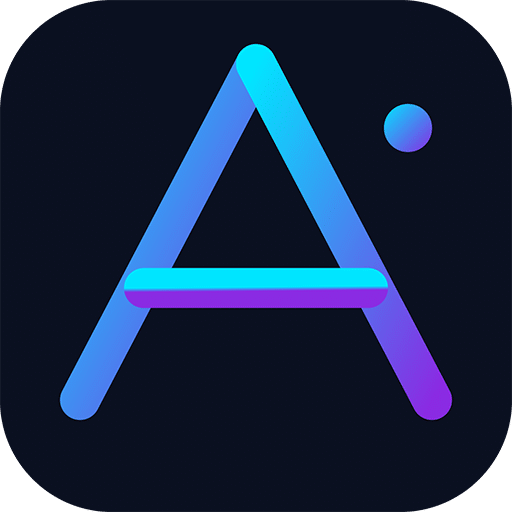
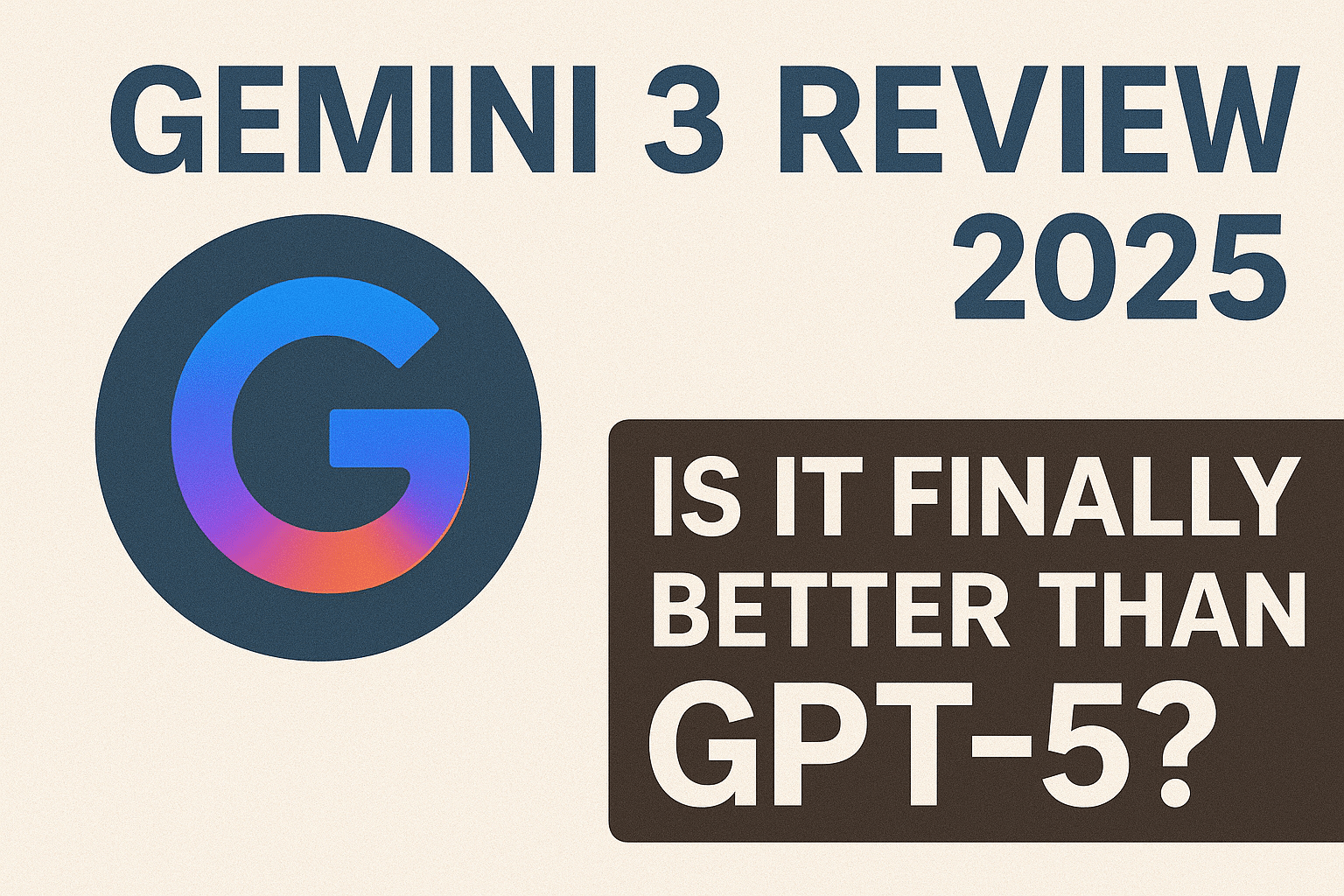
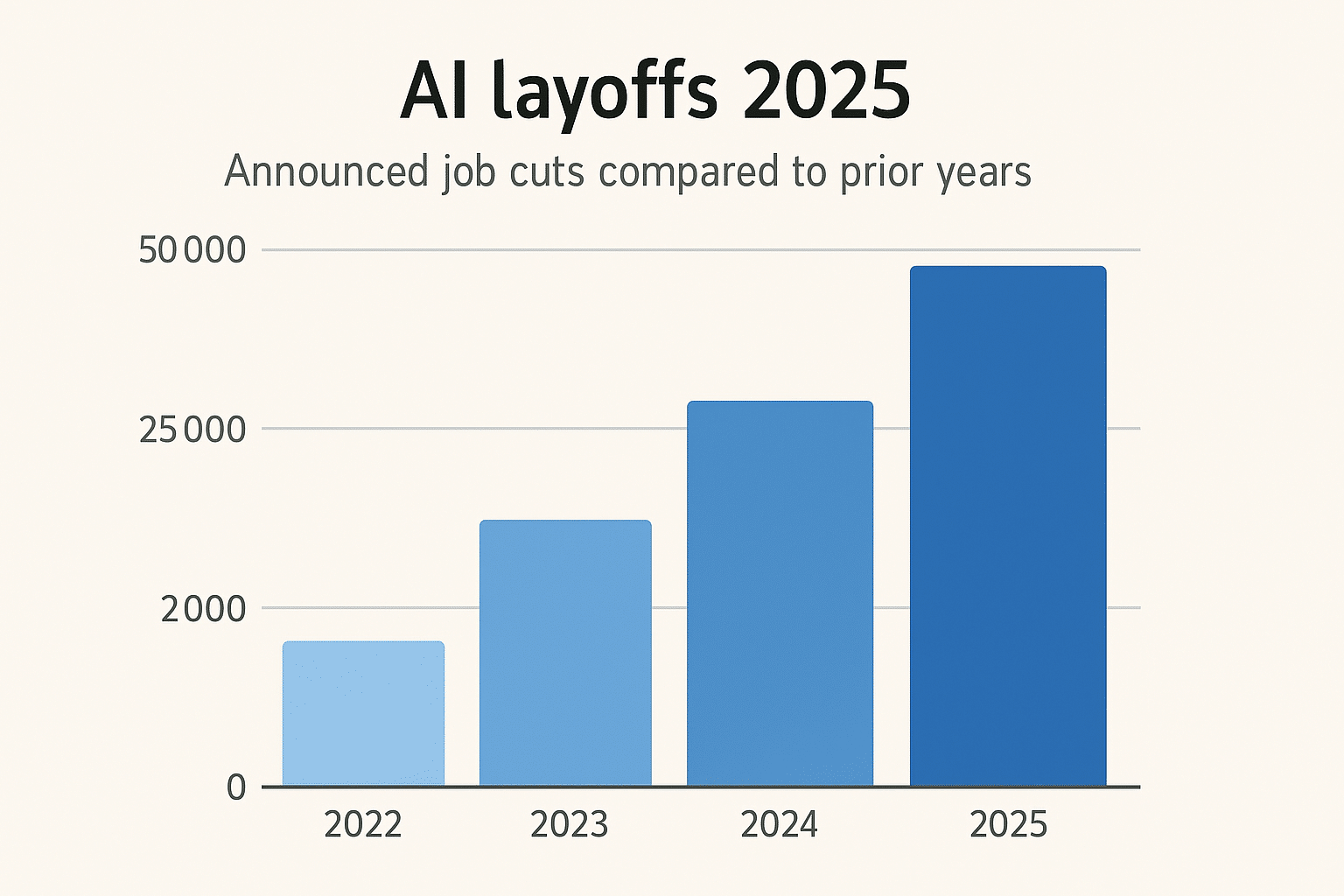






Leave a Reply